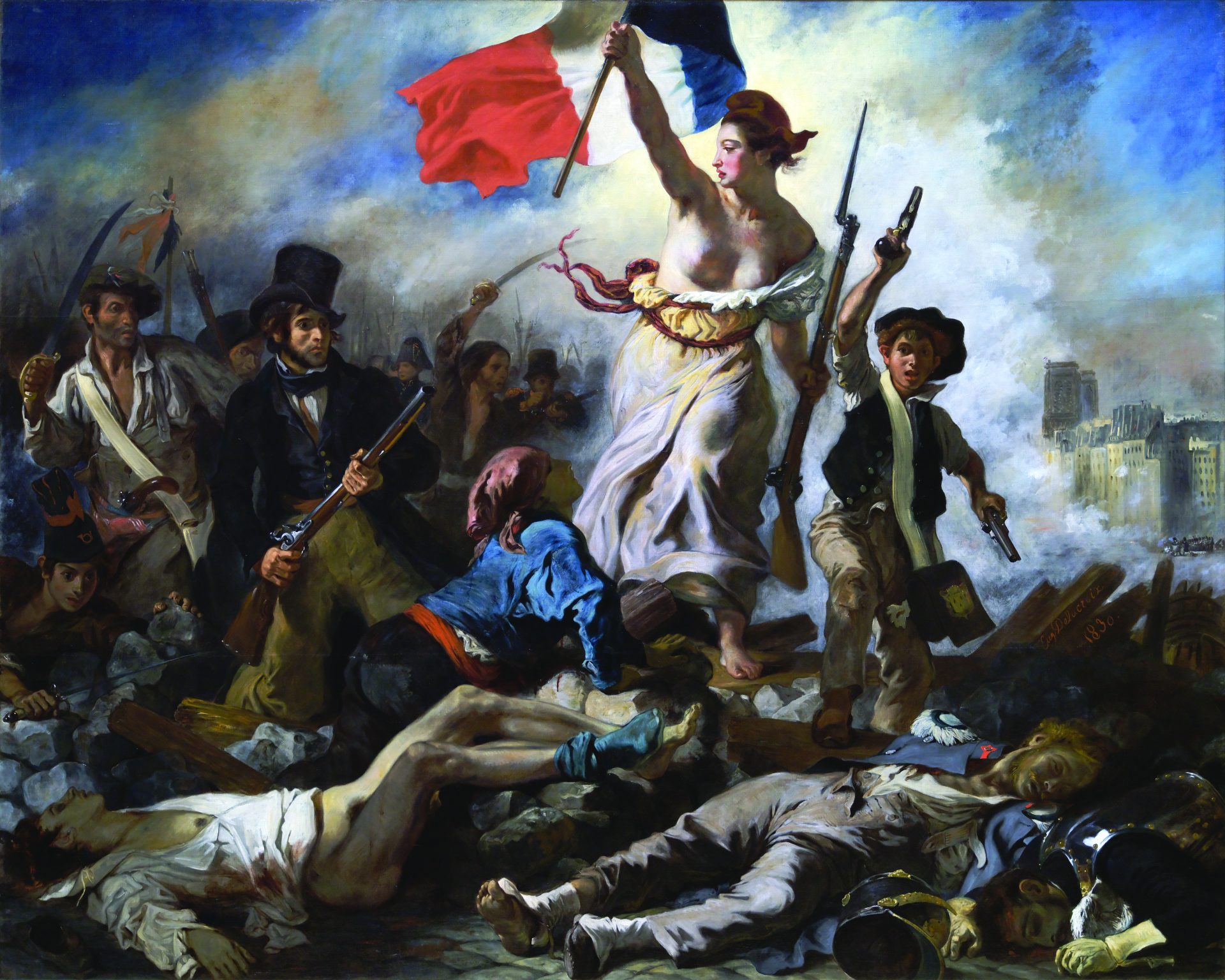TWENTY YEARS AGO, the Cannes Film Festival made a concerted effort to bring in more Hollywood fare. This may explain why Shrek showed in the 2001 competition up against works by Shōhei Imamura, Michael Haneke, Jean-Luc Godard, and Mohsen Makhmalbaf. Baz Luhrmann’s musical Moulin Rouge! opened the festival before going on to worldwide box-office success and eight Academy Award nominations. At one point in Luhrmann’s film, the impresario advises Nicole Kidman’s character to renounce the man she loves in favor of the powerful duke to whom she has been promised so that the jealous aristocrat will not put out a contract on her beloved’s life. “Hurt him,” she is told. “Hurt him to save him.” I don’t know if Claire Denis saw the film on opening night at the Palais des Festivals, but if she did I wonder if her ears pricked up at that moment. Finally, there was something to make desire snag in an otherwise emphatically PG-13 film about the world’s most notorious cabaret.
Denis was at this very American edition of Cannes to present Trouble Every Day, which quickly became her film maudit (cursed film). Attacked in print for its purported pretension, its premiere was marred by a chorus of boos from the audience (unconcealed hostility being one of the festival’s more thrilling traditions). Denis probably did herself no favors when, at the press conference, she told the truth and explained to the assembled critics that it was about “how close the kiss is to the bite.” But Denis’s previous films were also about this. Love, violence, and repression of one or both propelled most of her main characters. The difference was before she had played near enough to the third rail to make your hair stand on end. In Trouble, she grabbed hold of it.
It is sometimes called a vampire movie, but this is a poor descriptor. A hazily described “sickness” causes Coré (Béatrice Dalle) to seek out sex and devour the men she has enticed. The way “appetite” shifts between the literal and metaphorical leads to some of Denis’s most memorable scenes. For all the violence, the person who behaves the most irrationally in the film is not the woman succumbing to the bloodlust or the men succumbing to the regular kind. It is Coré’s husband, Dr. Léo Semeneau (Alex Descas). Knowing what his wife does, he locks her into their home while he’s gone and picks her up from the scenes of her killings when she escapes. He is protective and loyal in the face of the evidence, which is a way of saying he, too, is sick. Love may be exhausted by the person your lover has turned out to be, but its residue can fog the brain. Under its influence, it is easier to imagine making peace with a cannibal than the end of a shared life.
The film’s mixed reception is not surprising, especially when compared with its internationally heralded predecessor Beau travail (1999). That one was elegant and choreographed, content to spend long passages watching men’s bodies in motion. Trouble Every Day is grim, gory, and exists in a world where a woman’s predatory behavior is dutifully covered up by the men around her. What’s unsettling is how it clarifies the meaning of “a Claire Denis film.” No matter how far out of her wheelhouse it seems, it fits squarely with her interests and methods. She is drawn to desire, the ghosts of colonialism, and literature (she has cowritten with Emmanuèle Bernheim and Marie NDiaye, made an abortive attempt with Zadie Smith, and loosely adapted Herman Melville). Her work is strikingly tactile, filled with images you should be able to touch, like the charm necklace around Mati Diop’s neck in 35 Shots of Rum (2008) or the pink fabric of Isabelle Huppert’s dress in White Material (2009). Denis highlights without underlining. Trouble Every Day inverts, but does not repudiate, her sensualism. It turns the desiring touch that animates much of her work into a trap. She films a man who is about to die a gruesome death the same way she films a man about to sweep a woman off her feet—beautifully and at an uncommon angle.

Denis has what feels like an increasingly rare faith in images and rhythm’s ability to hypnotize—the hypnotic state being the optimal way to engage in an art form born of flickering lights. Texture and sound leave you open, and the plot, such as there is any, suggests rather than defines. Her sensuality works through reduction. In Friday Night (2002), the film that followed Trouble Every Day and that made touch tender again, a Parisian woman is stuck in traffic because of a transit strike on the night she is supposed to move into her boyfriend’s apartment. She picks up a handsome hitchhiker and in no time at all finds herself in a hotel with him. The ensuing sex scenes resort to the common method of a montage of fragments of the actors’ bodies. The first time around, the score’s strings and piano overwhelm the soundtrack, but when they return to the room after dinner, Denis cuts the tryst to the sound of their bodies sliding against each other and the sheets. It’s tangential to auditory realism, providing not the sounds of sex so much as the sensation of skin on percale. It is apparent in these scenes, and in all of her films, that she is one of the few filmmakers who believes that a man can be beautiful. She films their bodies as both line and flesh. An affair becomes the light describing the curve of Vincent Lindon’s shoulder and the place where Valérie Lemercier’s back dimples beneath the insistence of his grasping hand. It looks like someone actually looking, a scene made less to represent intercourse than an answer to a half-whispered “What do you like about me?”
Bodies are supple things to Denis. They are so everywhere in the world, but the shock of her work rests on the fact that many movies treat them as vehicles—all surface, and functioning merely to carry a plot forward. When pleasure must be registered, movies often employ hyperbole (the leering tilt up or down a star’s perfect form) or the reaction shot (a slack jaw, a bitten lip). For a body of work as sensual as Denis’s, it’s notable how rarely she resorts to either. Her sex scenes, or even the ones just thick with yearning, operate on the logic of a memory intruding unannounced on your mind some afternoon long after the act. Her narrative ellipses create a similar effect. A story, like a memory, isn’t made up from what the narrator says. It’s a series of glimpses, omissions, and implications. The audience can fill in the rest.
In narrative cinema, beauty is more than composition; it requires the pressure of meaning. Emotion is more than the answer to an equation whose variables are plot points. It is rhythm and performance and the quality of the light that falls in the frame. It is difficult enough to corral all these moving pieces and even more so to do what Denis has done and add in a general awareness of the history that has shaped the world. This is most evident in the fact that the colonized and their descendants don’t only exist in her three films set in Africa, but also in those filmed in Paris. A walk around Paris wouldn’t make this surprising, but a tour of French cinema might. Denis’s worlds are messier than those in most work that tries to speak to this cohabitation, avoiding both the ignorance of the enlightened issue drama and the histrionics of most history films. That Denis’s movies admit that nonwhite people triumph, fail, drink, and go to school isn’t really to her credit. It is to many others’ discredit. This delicate handling has, at times, cost her points with critics. A contemporary negative review of Trouble in Variety twice noticed that Alex Descas’s character was “a black guy” (no one else is identified by their race, so one might assume this is relevant to the plot; it is not), but couldn’t quite suss out what his relationship was to the woman he lived with, bathed, and sultrily swayed with at night. “Many things depend on the point of view—on the angle of attack,” Denis Lavant’s character says early in Beau travail. For Denis and her viewers, everything does.
Beau travail is a film about soldiers who never go to war; 35 Shots of Rum wrings great emotion out of a rice cooker perched on a kitchen counter; The Intruder (2005) is a response to an essay by Jean-Luc Nancy. In less capable hands, or in a country lacking a robust support system for difficult and daring films, almost any one of Denis’s projects would be enough to doom a career. Attempting to produce a great body of work depends upon a willingness to court disaster. Presuming the talent and financial backing are there, if you never wonder, “What on earth are they thinking?” about a filmmaker of some longevity, you are likely not engaging with an artist but with a brand in the process of refining a known identity. It is worth noting, then, that though Denis is nearly synonymous with contemporary French cinema outside of her country, she has only played in the main competition of Cannes once, with her 1988 debut film, Chocolat. Susan Sontag wrote in a journal that the painters of her time were “conscious of ‘problem,’ what needs to be worked on. Each artist by his recent work issuing ‘white papers’ on this or that problem, + the critics judging whether their chosen problems are interesting or trivial.” A couple generations of filmmakers have risen since Denis’s debut, but she’s in rare company for still issuing white papers that probe something more interesting than technical possibilities. Her great skill is to make intimate dramas out of her chosen problems. She just asks and answers plainly, if not directly. What are the essential elements of a story? How much do you need to know in order to feel? How can someone help a loved one who can’t be saved? How does a father let his daughter go? How long will prisons be with us? Are you busy tonight?
Blair McClendon is a writer and filmmaker living in New York.






